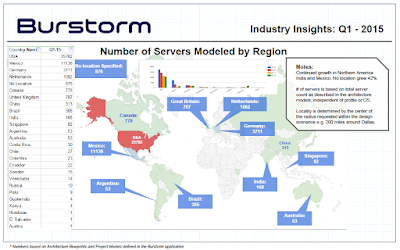Twitter Feed
Second Government Cloud Computing Survey
Earlier this week I had the pleasure of presenting at the Sys-con International Cloud Computing Expo in New York City. My presentation, The View from Government Cloud Computing Customers, reviewed…
An Ontology for Tactical Cloud Computing
This week I’ve had the pleasure of presenting at two fairly unique conferences. On Tuesday I was in San Diego at the Simulation Interoperability Standards Organization (SISO) Workshop. SISO is…
Federal Cloud Computing Roadmap
ServerVault, a long time provider of IT hosting services to the Federal government, has been discussing cloud computing quite a bit with their current (and future) customers. The repetitive nature…
Booz Allen Hamilton Lays Out Path To Cloud
Now that cloud computing is seen as a viable technology for the government marketplace, management consulting leader Booz Allen Hamilton is now providing cloud transition guidance. In his article “Cloud…
Is Sun Rising or Setting?
Today was strange. First Sun announces it’s open cloud computing platform. Sun Unveils Open Cloud Computing Platform “Sun on Wednesday announced plans to offer its own Open Cloud Platform, starting…
A Conversation with Emil Sayegh, Mosso General Manager
Last week, Mosso announced their new “Cloud Server” and “Cloud Sites” offerings. They also exited “Cloud Files” from beta, positioning themselves as a challenger to Amazon. With this as a…
Playing the Cloud Computing Wargame
Today at FOSE I tried my hand at balancing traditional IT, hybrid cloud offerings and commercial cloud offerings on a craps table. Just to set the scene, the Booz Allen…
Vivek Kundra Nominated for Federal CIO
Mr. Kundra’s quote from the Wall Street Journal says it all: “I’m a big believer in disruptive technology. If I went to the coffee shop, I would have more computing…
7th SOA for E-Government Conference
On April 28, 2009, Mitre will be holding its biannual SOA for E-Government Conference. This conference is one of the region’s premier opportunity for federal managers and MITRE Subject Matter…
as the linking of physical components and boxes together in way that addresses the organization’s needs. With this mindset, they focus on specific technical characteristics and capabilities. While these aspects still remain crucial to a successful deployment, the cloud solution architect must instead, visualize solutions as the linking together of compatible and interoperable services. With this viewpoint, the actual physical components are less of a concern and the service levels and service “-ilities” (maintainability, usability, portability, sustainability, etc.) rise in importance. They also must quantify the business economics of any delivered design. Many times economic aspects alone will define the difference between a new service launch and a new idea left on the shelf.
 |
|
Figure 1– Burnstorm cloud solution modeling software use
|
 |
|
Figure 2– Interactive solution design comparisons
|
( This content is being syndicated through multiple channels. The opinions expressed are solely those of the author and do not represent the views of GovCloud Network, GovCloud Network Partners or any other corporation or organization.)
( Thank you. If you enjoyed this article, get free updates by email or RSS – © Copyright Kevin L. Jackson 2015)
Cloud Computing
- CPUcoin Expands CPU/GPU Power Sharing with Cudo Ventures Enterprise Network Partnership
- CPUcoin Expands CPU/GPU Power Sharing with Cudo Ventures Enterprise Network Partnership
- Route1 Announces Q2 2019 Financial Results
- CPUcoin Expands CPU/GPU Power Sharing with Cudo Ventures Enterprise Network Partnership
- ChannelAdvisor to Present at the D.A. Davidson 18th Annual Technology Conference
Cybersecurity
- Route1 Announces Q2 2019 Financial Results
- FIRST US BANCSHARES, INC. DECLARES CASH DIVIDEND
- Business Continuity Management Planning Solution Market is Expected to Grow ~ US$ 1.6 Bn by the end of 2029 - PMR
- Atos delivers Quantum-Learning-as-a-Service to Xofia to enable artificial intelligence solutions
- New Ares IoT Botnet discovered on Android OS based Set-Top Boxes


